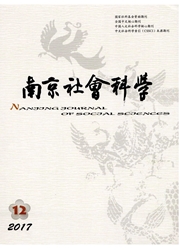

 中文摘要:
中文摘要:
雅各布森和英美新批评的语言诗学虽然都坚持文学本体论立场,坚持以语言学方法寻求科学的“文学性”,但最终形成了两种不同的本体论选择:语法肌质与语义结构。新批评为“语义结构”提供了“隐喻”“复义”“张力”“悖论”“反讽”等众多特性,而雅各布森则不仅将“隐喻”“复义”“张力”等特性吸纳于更深层的“语法肌质”之中,还揭示出对等与平行的深层结构法则。就科学性与深刻性而言,“语法肌质”比“语义结构”更接近稳定的、客观的本体,但共同的“本质主义”思维或者说本体论哲学的潜在影响,以及对“语言结构”的崇拜,使他们的理论都打上了二元论的烙印,也使得他们的批评实践都专注于寻找语法或语义的二元对立,因此我们只能看见“文学性”的两副模糊面孔。
 英文摘要:
英文摘要:
Although Roman Jakobson and Anglo-American New Criticism all stood their grounds for literary ontology and persisted in finding scientific "literariness" by linguistic method, two different selections of ontology came into being: grammatical texture and semantic structure. New criticism provided many features for "semantic structure", such as "metaphor" ," ambiguity" ," tension"," paradox", "irony" and etc. Jakobson not only brought "metaphor ambiguity tension" and other features into the deeper "grammatical texture", but also revealed two rules of subliminal structure : equivalence and parallelism. In the light of the science and profundity, "grammatical texture" is much closer to stable objective ontology than "semantic structure", but under the influence of the common essentialism thinking or ontological philosophy and adoration of linguistic structure, their theories have characteristic of dualism, and their aims were to research grammatical or semantic binary opposition in criticism practice. So, today we can only see two fuzzy faces of "Literariness".
 同期刊论文项目
同期刊论文项目
 同项目期刊论文
同项目期刊论文
 期刊信息
期刊信息
